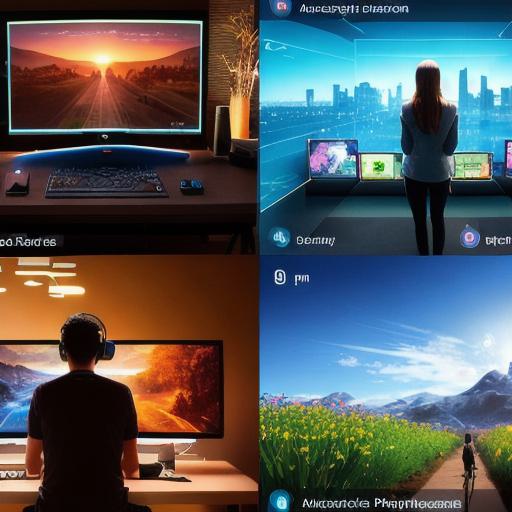The world is changing rapidly, and technology has always been a driving force behind it. One of the latest trends to emerge on the tech scene is the concept of the metaverse and Web3. These concepts are often used interchangeably, but they actually refer to different but related ideas. In this article, we’ll explore what the metaverse and Web3 mean, their potential impact on society, and how they’re being developed by experts in the field.
What is the Metaverse?
The metaverse is a virtual reality or augmented reality space where people can interact with each other in a simulated environment. It’s not a physical location but rather a digital world that exists online. In this virtual world, people can create avatars, join communities, and even participate in activities like gaming, shopping, and socializing.
The concept of the metaverse has been around for years, but it’s only recently that technology has advanced to make it possible for people to interact with each other in a way that feels real. This is thanks to advancements in virtual reality (VR) and augmented reality (AR) technologies, as well as improvements in network infrastructure and computing power.
What is Web3?
Web3 refers to the next evolution of the internet. It’s built on a decentralized infrastructure that allows for secure, transparent, and user-controlled data sharing and transactions. This means that instead of relying on central authorities or intermediaries to facilitate online transactions, users can do so directly with each other using smart contracts.
Web3 is also designed to be more accessible and inclusive than the current iteration of the internet. It’s built on open-source technologies that anyone can use or contribute to, making it possible for anyone to build applications and services that can reach a global audience.
The Impact of the Metaverse and Web3
The potential impact of the metaverse and Web3 is enormous. Here are some ways they could change our world:

- Virtual economies: The metaverse could create new virtual economies where people can buy, sell, and trade goods and services in a digital environment. This could open up new opportunities for entrepreneurs and small businesses to reach global audiences without the need for expensive marketing campaigns.
- Improved social connections: The metaverse could help people connect with others who share their interests and passions, regardless of where they are in the world. This could lead to a more connected and inclusive society.
- Enhanced privacy and security: Web3 technologies are designed to be decentralized and transparent, which means that users have more control over their data. This could help prevent data breaches and protect people’s privacy online.
- Increased accessibility: Web3 technologies are built on open-source platforms, which means that anyone can use or contribute to them. This could help make the internet more accessible and inclusive for people in developing countries who may not have the resources or technical skills to participate fully in the current system.
Examples of Metaverse and Web3 Developments

There are already many examples of metaverse and Web3 developments happening around the world. Here are a few:
- Decentralized finance (DeFi): DeFi is a set of decentralized financial applications that allow users to lend, borrow, and trade assets in a transparent and secure way without relying on intermediaries like banks or investment firms. DeFi platforms like Ethereum, Binance Smart Chain, and Polygon are already being used by millions of people around the world.
- Non-fungible tokens (NFTs): NFTs are unique digital assets that can be bought, sold, and traded on blockchain platforms. They’re often used to represent art, collectibles, and other digital assets that have value. Examples of NFT marketplaces include OpenSea and Rarible.
- Virtual real estate: Virtual
